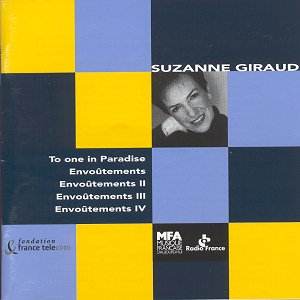 Composer: Sergei Rachmaninov
Composer: Sergei Rachmaninov
Works: Piano Concerto No. 2; Largo (from Piano Concerto No. 4); Vocalise; Prelude in C sharp minor; Pâques (from Suite 1 for two pianos); Adagio (from Symphony No. 2); Non allegro (from Symphonic Dances); Paganini Rhapsody; Allegro ma non tanto (from Piano Concerto No. 3); Adagio ma non troppo – allegro vivace (from Symphony No. 3); Nunc Dimittis (from Vespers); Prelude in G minor; Romance in F minor (arr. Lloyd Webber); Liebesfreud (Kreisler arr. Rachmaninov)
Performers: Vladimir Ashkenazy (piano/conductor); Concertgebouw Orchestra; Bernard Haitink (conductor); Renée Fleming (soprano); St. Petersburg Chamber Choir; Zoltán Kocsis (piano); Rafael Orozco (piano); Valery Gergiev (conductor); Lenehan (orchestra); Fistoulari (conductor)
Recording: Various recordings from 1963 to 1998, DDD/ADD
Label: DECCA
Rachmaninov remains a titan of the Russian Romantic repertoire, his music suffused with lush harmonies and sweeping melodies that resonate deeply with the listener. This two-CD compilation, “The Essential Rachmaninov,” aims to encapsulate the essence of his oeuvre while catering to a broad audience—from novice listeners to seasoned enthusiasts. Offering a generous selection of 17 tracks, it is designed to provide a broad overview rather than an exhaustive exploration, yet it effectively showcases the emotive and technical range of Rachmaninov’s compositions.
The performances within this set are largely anchored by the venerable partnership of pianist Vladimir Ashkenazy and conductor Bernard Haitink. Their rendition of the Piano Concerto No. 2 is particularly noteworthy, revealing the work’s inherent contrasts and emotional depths. Ashkenazy’s touch is both delicate and commanding, allowing the lyrical passages to soar while imbuing the more vigorous sections with an unrestrained vigor. The orchestral accompaniment from the Concertgebouw is equally compelling, delivering a rich, sonorous backdrop that heightens the concerto’s dramatic arcs. However, the slower sections, while beautifully played, sometimes verge on languor, which may leave a casual listener momentarily adrift—an observation that could be applied to several interpretations in this collection.
The inclusion of shorter works, such as the “Vocalise” performed by Renée Fleming, adds a contrasting texture to the set. Fleming’s interpretation captures the ethereal quality of the piece with breathtaking warmth, though at times it echoes the sumptuousness of Richard Strauss’s melodic style rather than the more introspective qualities Rachmaninov often imbued in his vocal works. In contrast, the “Prelude in C sharp minor” from Ashkenazy’s earlier recording stands out for its soulful rise from shadows to light, showcasing the pianist’s capacity for nuance and emotional depth.
The technical quality of the recordings varies, reflecting the timeline from which they originate. While the newer tracks exhibit clarity and richness, the older Fistoulari-conducted “Allegro ma non tanto” from the Third Piano Concerto, albeit marred by some surface noise, still possesses a certain charm that speaks to the vitality of Rachmaninov’s music. Ashkenazy’s lively interpretation of the “Symphonic Dances” captures the exhilarating energy that characterizes Rachmaninov’s later works, with the brass section delivering a stormy, almost visceral impact that is both memorable and thrilling.
The collection’s arrangement, while generous, does reveal a preference for extracting movements rather than presenting complete works, which might dilute the overall impact for those seeking a more cohesive experience of Rachmaninov’s larger compositions. However, this format serves as an excellent introduction to his style, allowing listeners to sample a wide array of works without the commitment of a full-length album.
The Essential Rachmaninov stands as a commendable entry point for those new to the composer, offering a blend of beloved pieces and standout performances that showcase the emotional and technical breadth of his music. While it may not satisfy the demands of the ardent Rachmaninov aficionado, it provides an inviting and accessible pathway into the rich tapestry of his artistic legacy, making it a valuable addition to any classical music collection.



